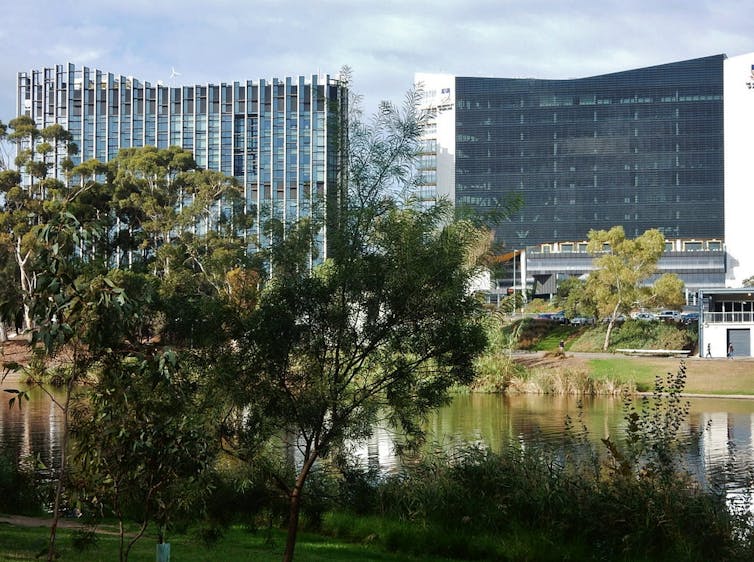
Australian higher education is no stranger to mergers. Starting in the late 1980s, 89 institutions in Australia offering higher education courses consolidated to a much smaller number within a few years. Eventually, these become the 39 Australian universities we know now.
These mergers provide some insight into how combining two institutions can be successful. Aligning the cultures and expectations of the merging institutions counts, as does good leadership.
The advantage of scale
The University of Adelaide and University of South Australia are both very successful institutions. Adelaide is one of the original Australian universities, with only the University of Sydney and Melbourne coming before. UniSA was itself created by combining campuses of two institutions in the early 1990s.
Why propose to merge two successful universities now? The discussion paper released by the two universities sets out a number of likely benefits from the merger.
As a newly reconstituted university, it emphasises, the strengths of each institution can provide opportunities in teaching and research, which can be hard to achieve through collaboration rather than merger.
The University of Adelaide is older, with a larger budget, fewer students and more staff than UniSA. UniSA is newer, but has been attracting students and research funding at a steady rate over the past few years.
They will be more than the sum of their parts, the argument goes. Central to this is that the new university will be an “internationally oriented university of scale”, able to attract more international students and move up in university rankings.
Scale is one important aspiration here. A number of leading universities worldwide, such as the University of Toronto (with just over 90,000 enrolled students), are large teaching universities, while other leading universities have large budgets and armies of research academics. Scale is seen to provide opportunities and was one of the key reasons for the consolidation of institutions in the 1980s.
So we’ve been here before?
Not quite. The frenzy of mergers came about in 1988 as the federal government announced a new structure for the higher education system. This system focused on one type of institution - a university - in what was to be called the Unified National System. At that time, several types of institution were delivering higher education, including 46 non-doctoral-granting ones called Colleges of Advanced Education.
In restructuring Australian higher education, the education minister at the time, John Dawkins, pushed for larger institutions (all of which chose to call themselves universities) using student load to set minimum size. The minimum was set at 2,000 full-time equivalent students. Some 5,000 were required for teaching and some research activity and 8,000 for “relatively comprehensive” research.
Read more: Australia doesn't have too many universities. Here's why
These mergers were all said to be voluntary, but there were very strong incentives for them to occur. Several of the Colleges of Advanced Education had started offering doctoral training and sought university status. Some smaller institutions were less enthusiastic but had few choices but to find a partner if they were to meet the federal government’s plan.
Mergers
By and large, merging many different institutions in Australian higher education in the 1990s has been successful. If the proposed merger between The University of Adelaide and University of South Australia comes to pass, it will be different from those early mergers, not least because none were between two existing universities. But they still provide insight.
The full process of the Dawkins mergers took nearly a decade. While there were many successes, there were also notable failures. These failures caused ongoing disruption for students and academics.
One example is the Network University of New England, which existed from July 1989 until December 1993. It incorporated the University of New England, Armidale College of Advanced Education, the Northern Rivers College of Advanced Education and the Orange Agricultural College.
These smaller institutions came together in the Network University to achieve the kind of scale Dawkins indicated was necessary, but it was a troubled union from the outset. The devolved structure chosen for the Network University enabled some members of the new university to persist with campaigns for independence.
For example, one campus refused to use another’s distance education centre and established its own instead. This undermined the logic of achieving better performance and efficiency while reducing duplication. The pursuit of local advantages by some institutional leaders became unsustainable and the Network University was eventually dissolved.
Some lessons from the mergers in the 1980s
Scale can have benefits, but as the story of the Network University of New England and others show, care is needed in forming a new university, to ensure it doesn’t become different campuses and cultures adopting a single nameplate.
Read more: Do mergers make for better councils? The evidence is against 'bigger is better' for local government
Both UniSA and the University of Adelaide have strong programs in many shared areas.
Here, good leadership can align aspirations with the expectations, and match these with a transition that brings staff, students and community along at each stage. This is an ongoing task for any new univerity’s vice-chancellor.
Gwilym Croucher, Senior Lecturer, Melbourne Centre for the Study of Higher Education, University of Melbourne
This article was originally published on The Conversation. Read the original article.
No comments:
Post a Comment